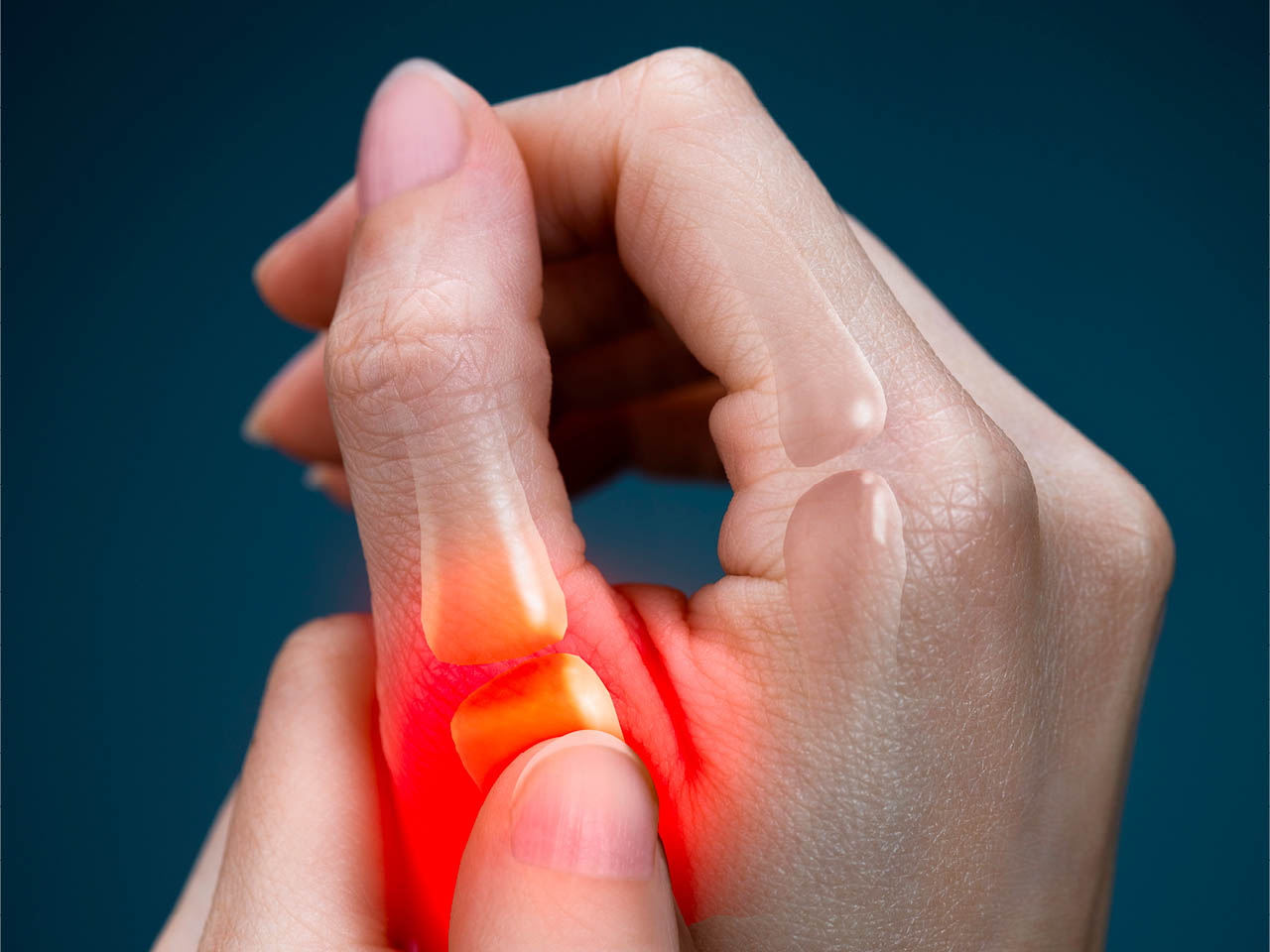By Franciscan Health
Basilar joint thumb arthritis, also known as carpometacarpal joint arthritis, is marked by pain, stiffness and swelling in the joint at the base of the thumb. A common condition, carpometacarpal joint arthritis develops when the cartilage in the thumb joint becomes degenerative over time, causing the bones of the thumb to rub together painfully.
What Are Common Symptoms of Thumb Arthritis?
“In addition to stiffness and swelling in the thumb, patients with arthritis in the thumb may also notice a weakened grip and feelings of pain when trying to “grip or pinch, such as when opening a door, jar or can,” says Kelly Graner, MD, an orthopedic hand and upper extremity surgeon with the Franciscan Physician Network Orthopedic Specialists in Indianapolis.
People with thumb arthritis might also notice a decreased range of thumb motion and an enlargement in the appearance of their thumb joint.
What Are the Risk Factors for Thumb Arthritis?
People over the age of 40 are most at risk for thumb arthritis as the condition is caused by a breakdown of joint cartilage over time – a natural effect of aging. Women are more likely to develop arthritis in the thumb than men.
People whose normal daily activities place frequent stress on their thumbs may also be more likely to develop carpometacarpal joint arthritis. Patients with certain conditions that cause malformed joints and those who have suffered injuries to their thumb joint could also be at higher risk of developing arthritis in the thumb.
How Is Thumb Arthritis Treated?
Physicians recommend treating thumb arthritis, initially, with over-the-counter non-steroidal anti-inflammatory medications (NSAIDs) such as Advil and Aleve, or Tylenol. Placing a heating pad, or heating wrap on the joint, or if the patient prefers, icing the joint, can also soothe pain and swelling.
Patients may also find using a thumb brace or splint to modify and reduce movement of their thumb helps further alleviate pain. Avoiding activities, such as sports, or hobbies, that seem to worsen the thumb pain for several weeks can also help address the condition.
“These are easy things patients can try at home before seeking more advanced medical attention,” says Dr. Graner.
If at-home remedies fail to reduce pain and swelling, patients can talk to their health care providers about the next tier of arthritis treatment options, including steroid injections. A single steroid injection can often provide many months of joint pain relief.
“Surgery for symptomatic thumb carpometacarpal arthritis is a reconstructive procedure which typically involves removing the trapezium bone from the wrist and stabilizing the thumb metacarpal base, however this procedure is not appropriate in every clinical situation,” explains Dr. Graner.
Your physician can help you decide the best treatment path for your particular case.
“We work with patients to do whatever is best to get their thumb arthritis symptoms under control,” adds Dr. Graner.
If you have noticed pain, swelling or weakness in your thumb, ask your doctor if you could be experiencing symptoms of thumb arthritis. This common condition can be successfully treated with a range of both at-home and provider-recommended interventions.










